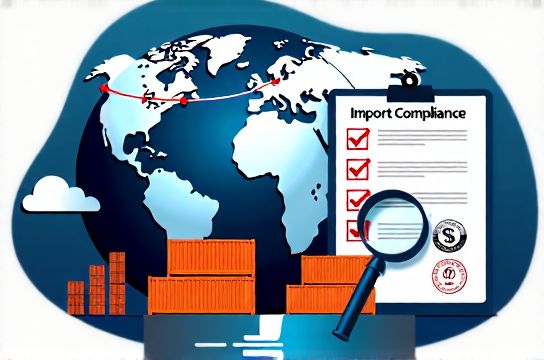Must Know Laws for Importing from China Abroad
- 时间:
- 浏览:18
- 来源:OrientDeck
So, you're thinking about importing goods from China? Smart move. With over 80% of global consumer electronics and nearly 70% of clothing exports originating from China, it’s no wonder businesses worldwide are tapping into this manufacturing powerhouse. But hold up—before you start dreaming of profit margins, there’s something critical you need to know: import laws matter.

Why You Can’t Ignore Import Regulations
Every country has its own rulebook when it comes to bringing in goods from China. Skip the fine print, and you could face delays, fines, or even seized shipments. Not cool.
Let’s break down the top legal must-knows with real data and practical tips.
1. Customs Duties & Tariffs Vary by Country
No two countries tax imports the same way. For example:
| Country | Average Tariff on Chinese Goods (%) | Key Regulated Categories |
|---|---|---|
| United States | 7.5% | Electronics, Textiles, Steel |
| Germany | 4.2% | Machinery, Auto Parts |
| Australia | 5.0% | Toys, Furniture, Apparel |
| Canada | 6.1% | Consumer Electronics, Footwear |
Source: World Bank Trade Data, 2023
Pro tip: Always check your country’s Harmonized System (HS) Code—it determines your product’s duty rate. Misclassification? That’s a fast track to penalties.
2. Product Compliance Is Non-Negotiable
Just because it’s made in China doesn’t mean it meets your local safety standards. The EU, for instance, requires CE marking for electronics and machinery. In the U.S., the FCC and CPSC regulate everything from Wi-Fi devices to children’s toys.
- Electronics: Need FCC certification (U.S.) or CE mark (EU)
- Apparel: Must comply with textile labeling laws
- Toys: Subject to strict lead and phthalate limits
Bottom line: Test first, ship second.
3. Anti-Dumping & Countervailing Duties Exist
Some Chinese products are sold so cheaply that foreign governments slap on extra duties to protect local industries. For example, solar panels from China face up to 250% tariffs in the EU due to anti-dumping rules.
If your product falls under such scrutiny, expect higher costs and more paperwork. Stay updated via government trade portals like trade.gov (U.S.) or ec.europa.eu (EU).
4. Intellectual Property (IP) Risks Are Real
Importing counterfeit goods—even unknowingly—can land you in legal trouble. The U.S. Customs and Border Protection (CBP) seized over $1.4 billion in fake goods from China in 2022 alone.
Always verify suppliers through:
- Business license checks
- Trademark ownership verification
- Third-party inspections
5. Documentation Must Be Spot-On
Missing or incorrect paperwork = shipment stuck in limbo. At minimum, you’ll need:
- Commercial Invoice
- Packing List
- Bill of Lading
- Certificate of Origin
- Import License (if required)
One typo in the HS code? Could cost you thousands.
Final Thoughts: Do It Right, Reap the Rewards
Yes, importing from China is complex—but totally worth it if done legally and smartly. Understand your duties, comply with standards, and document everything. Your future self (and your wallet) will thank you.
Stay sharp, stay compliant, and happy importing!